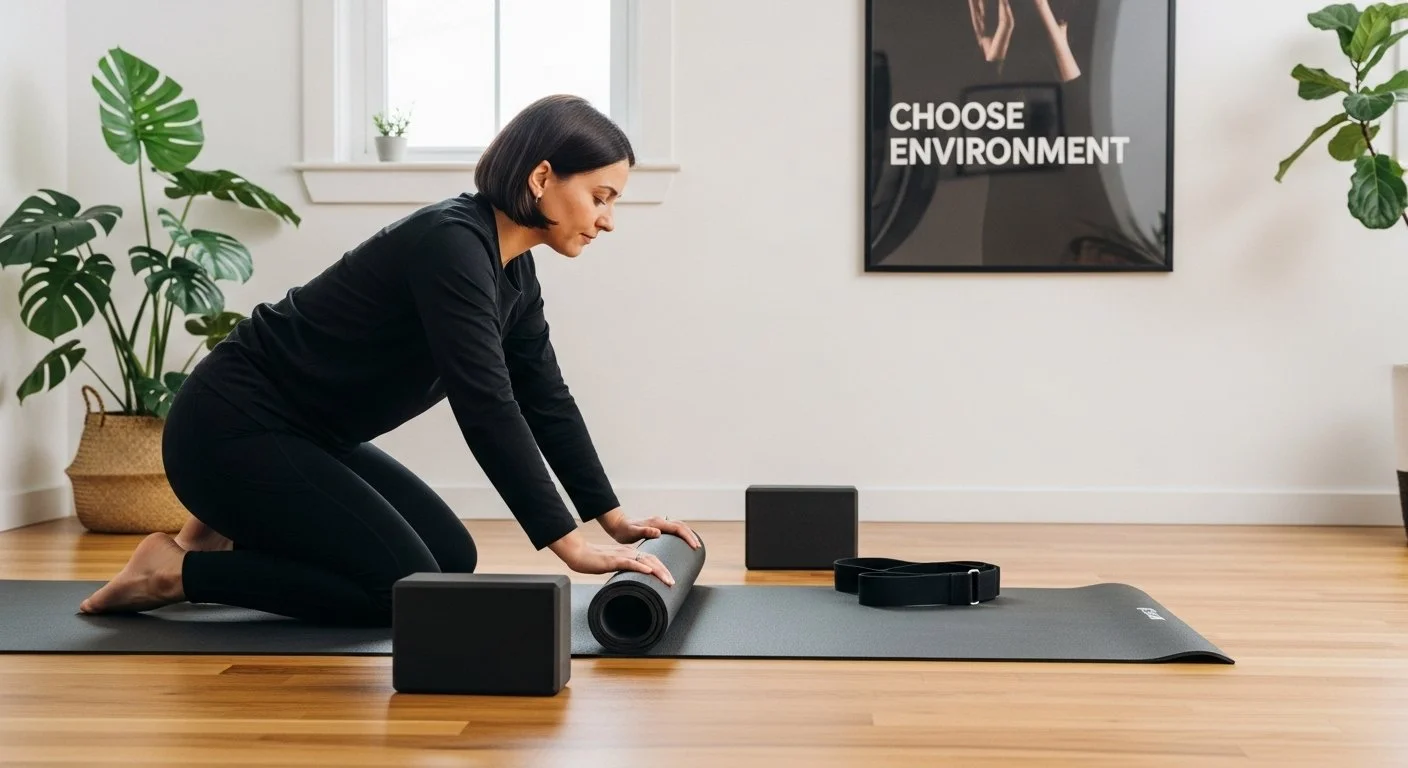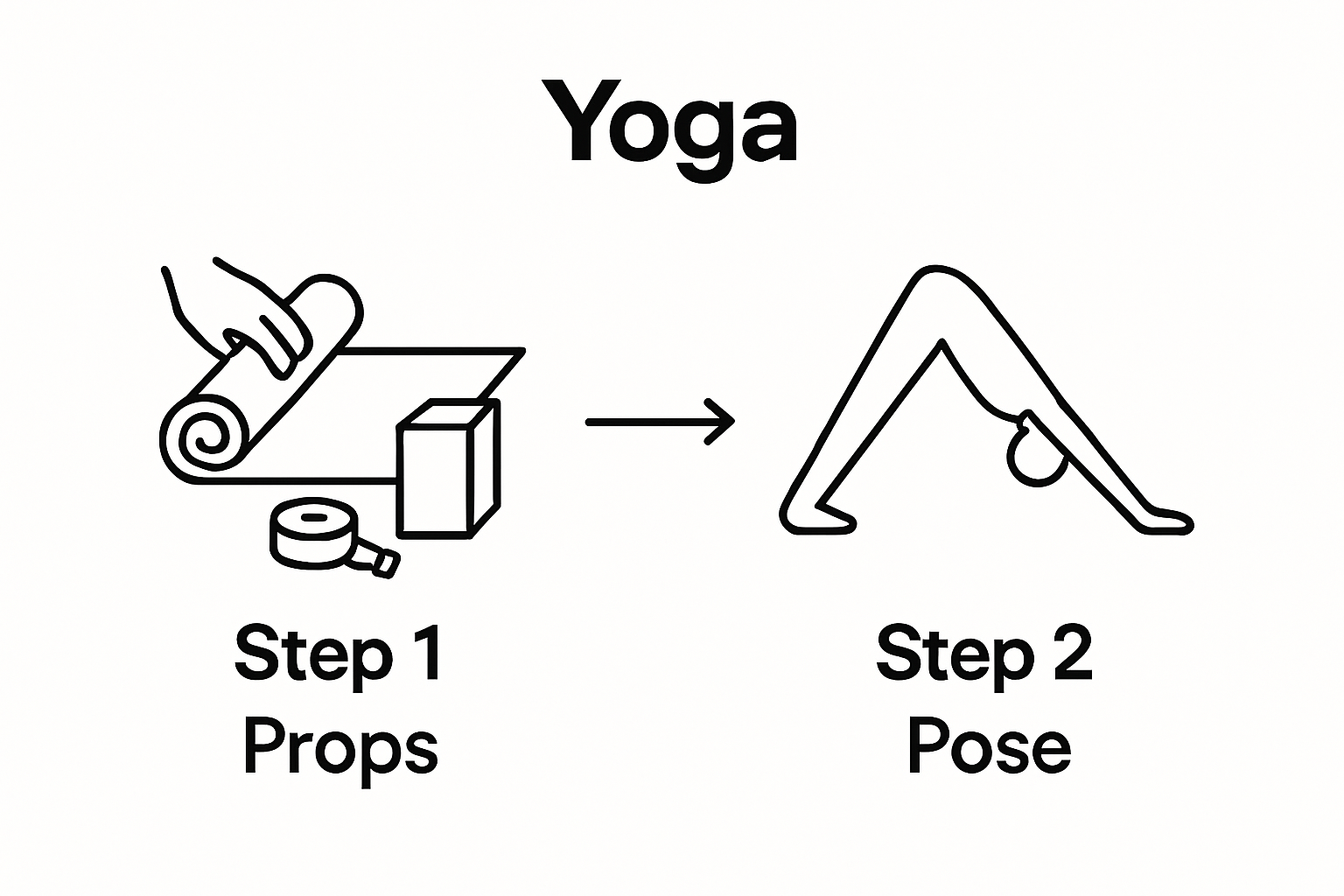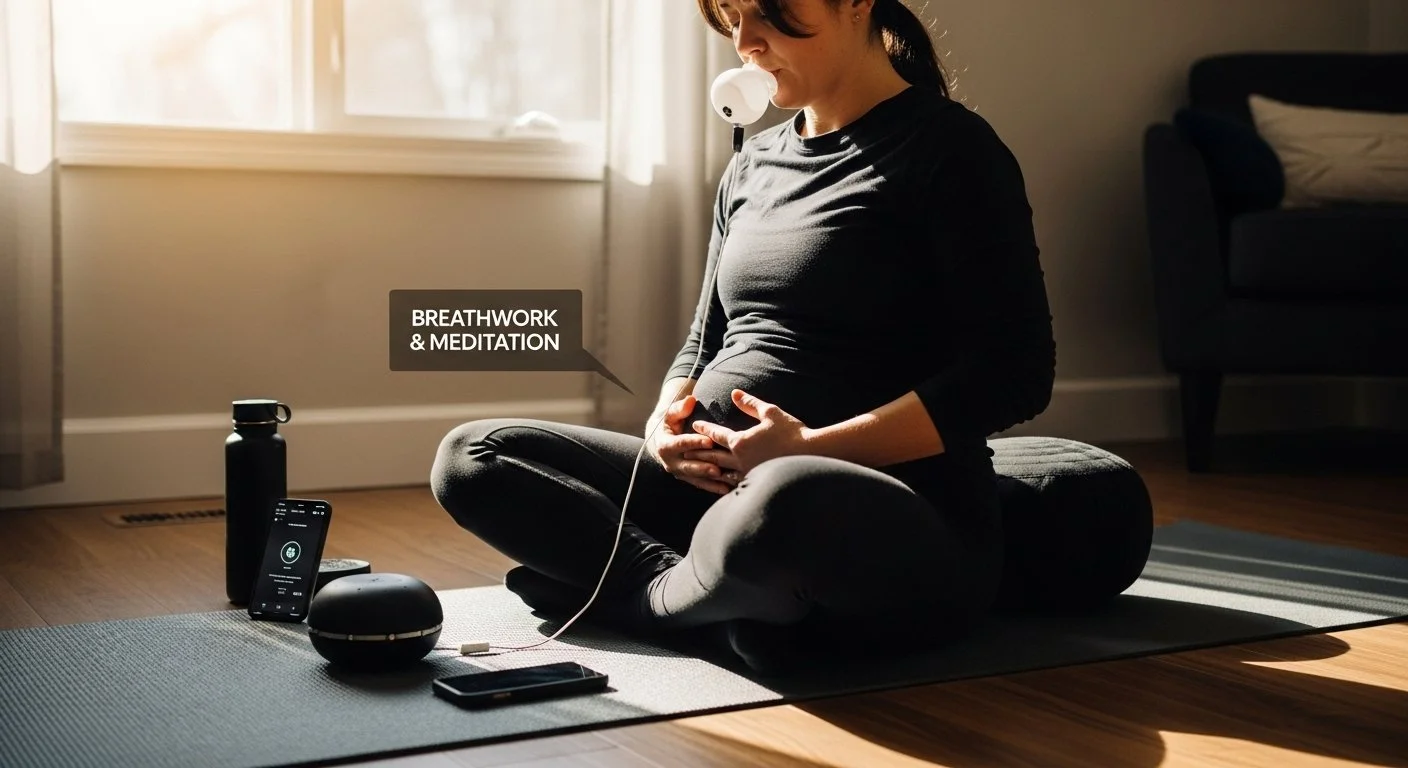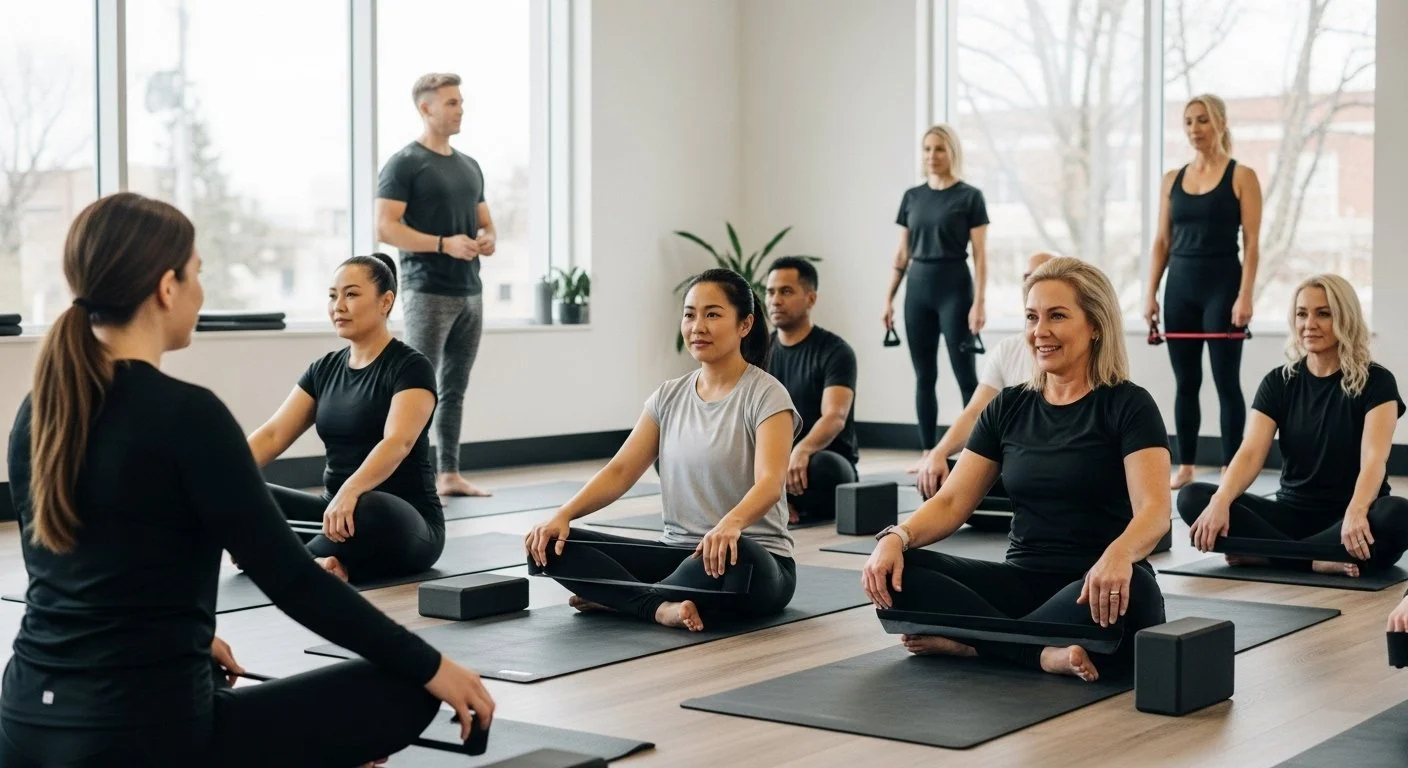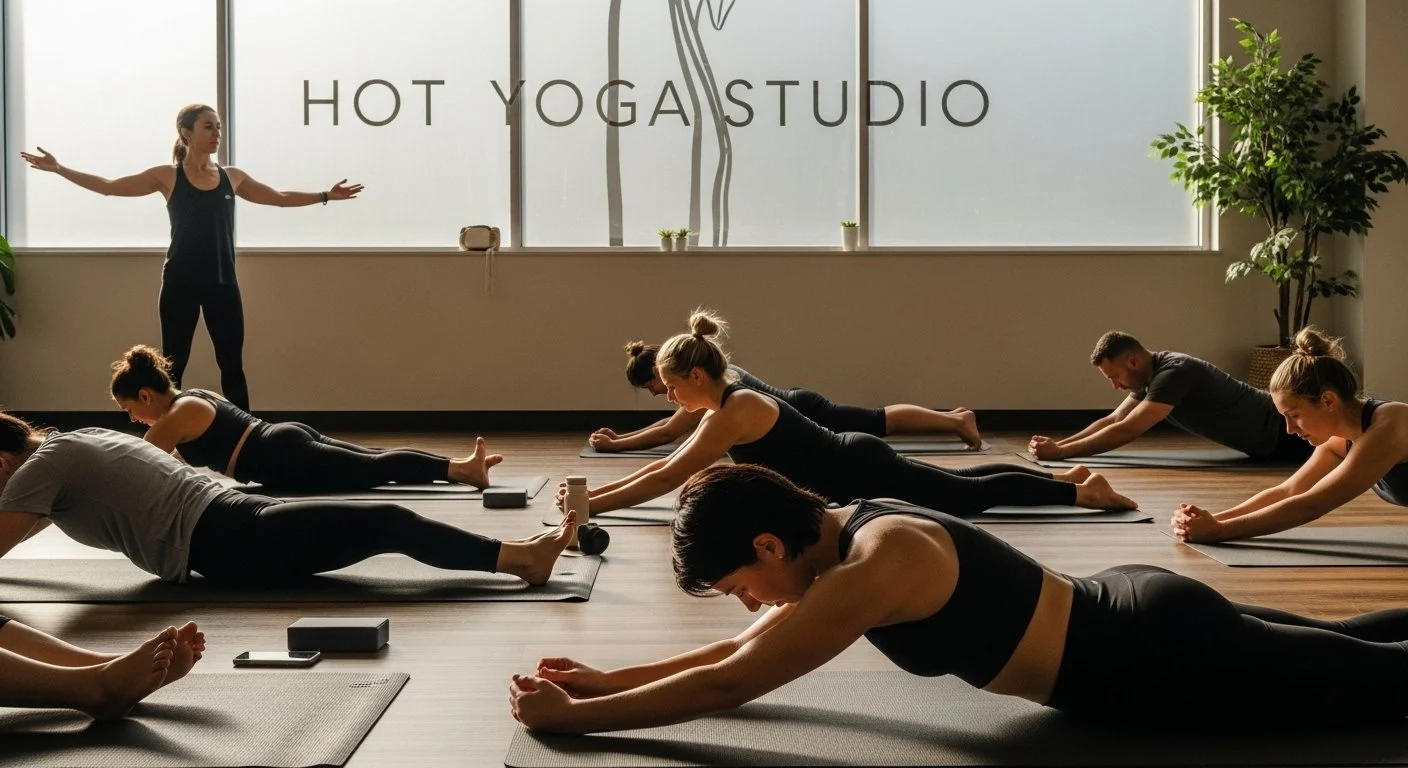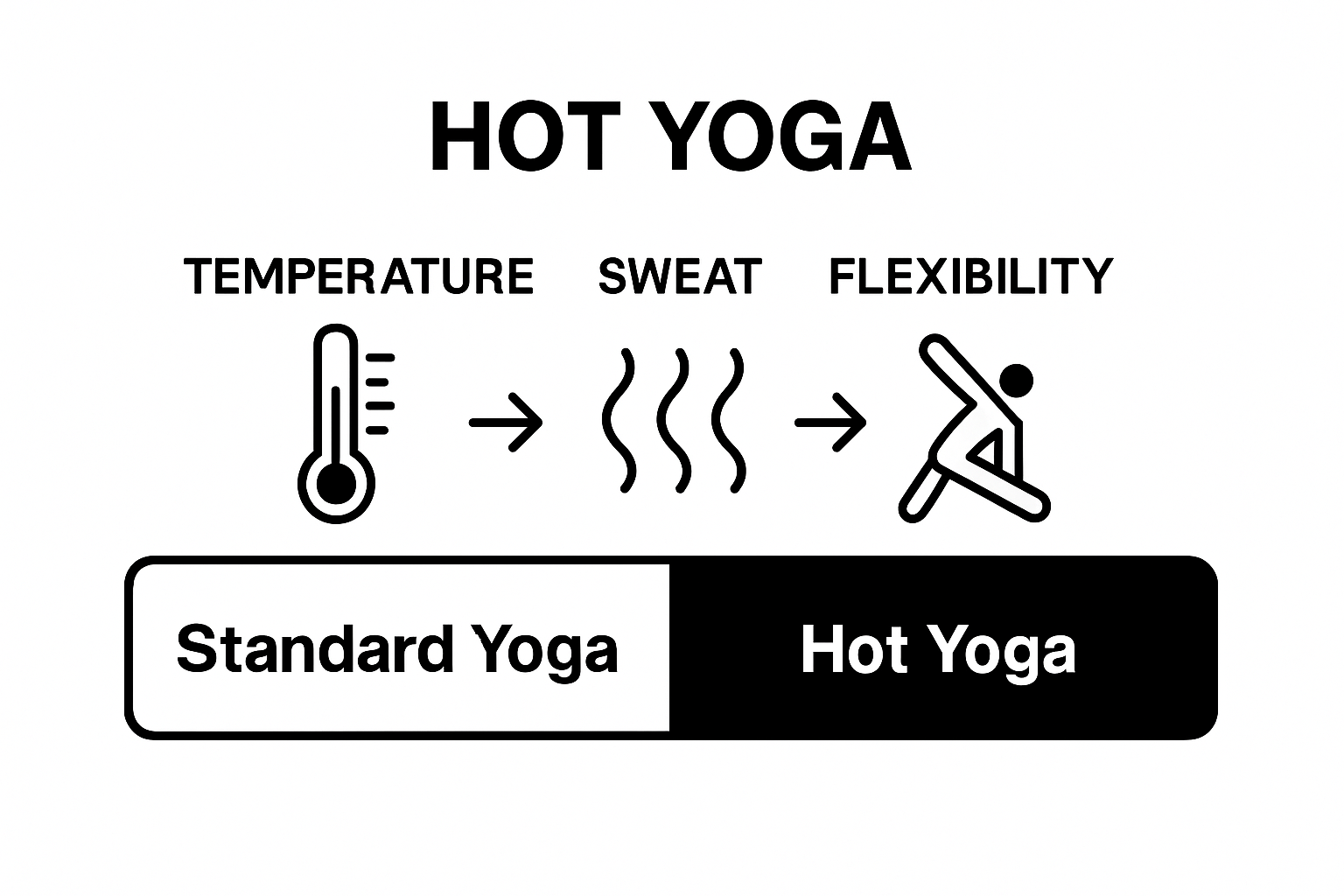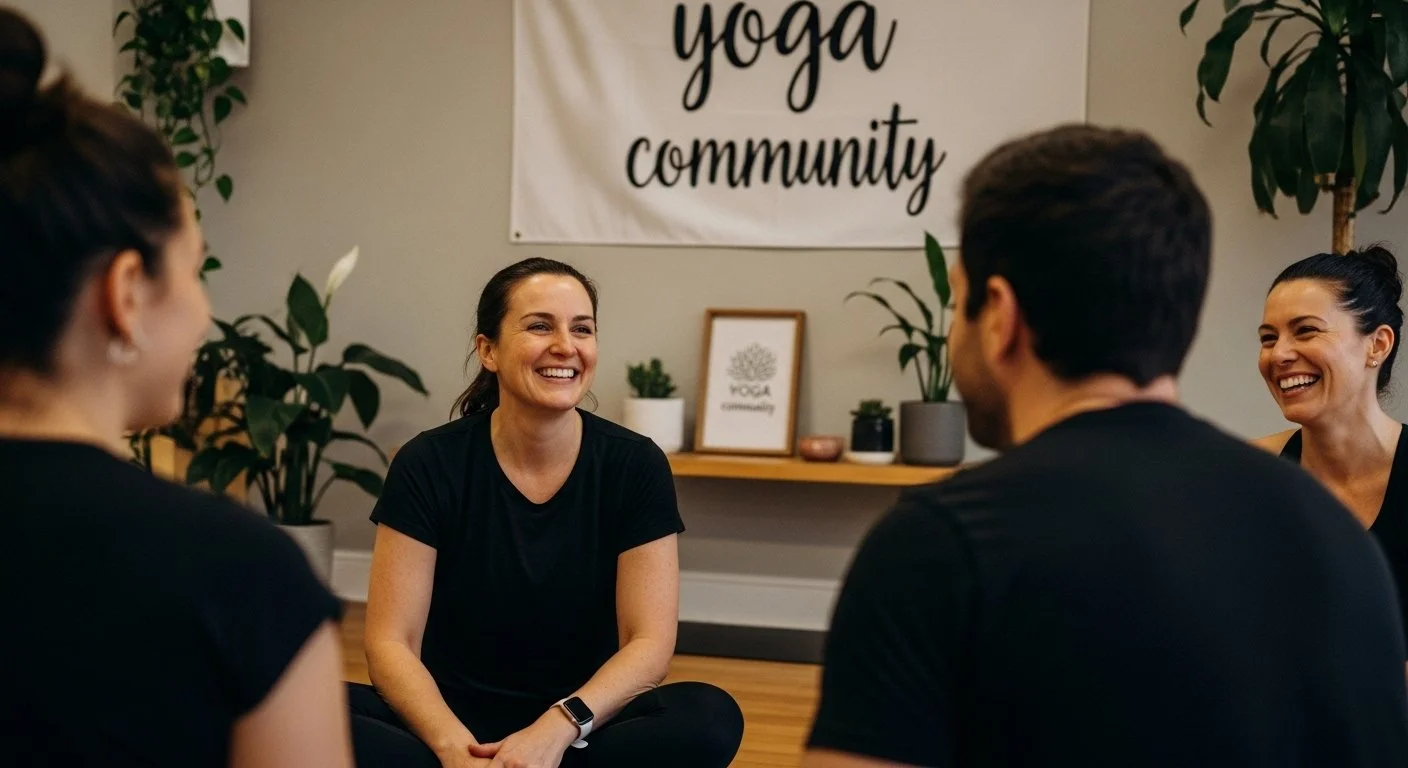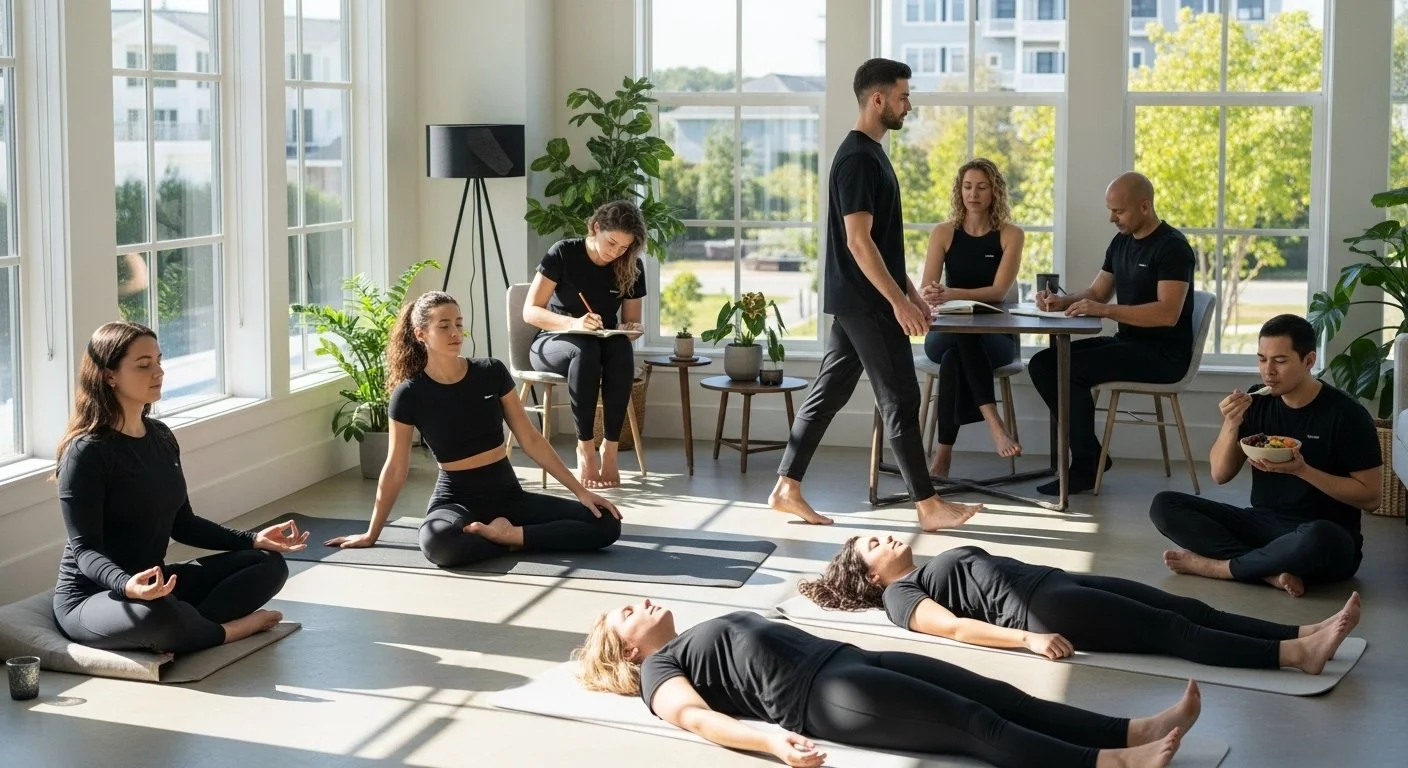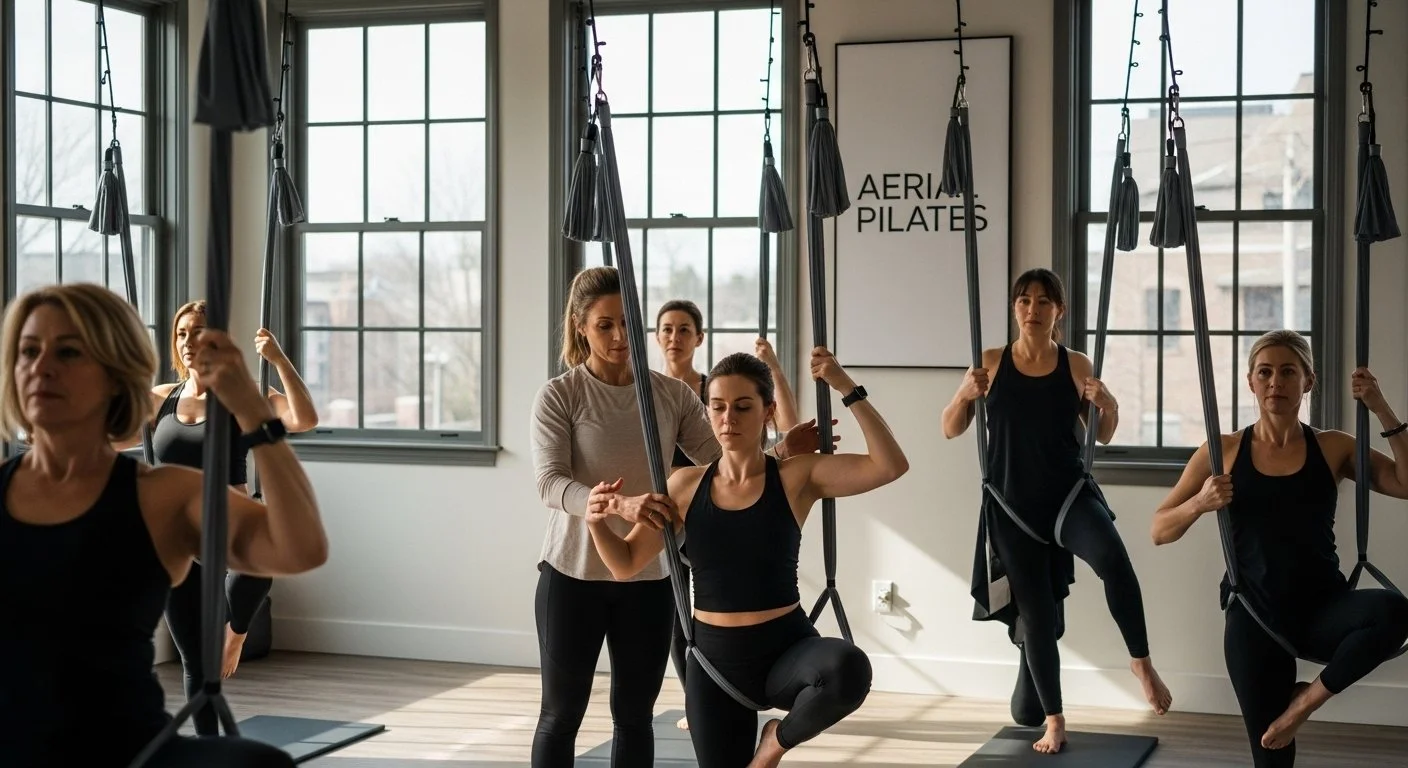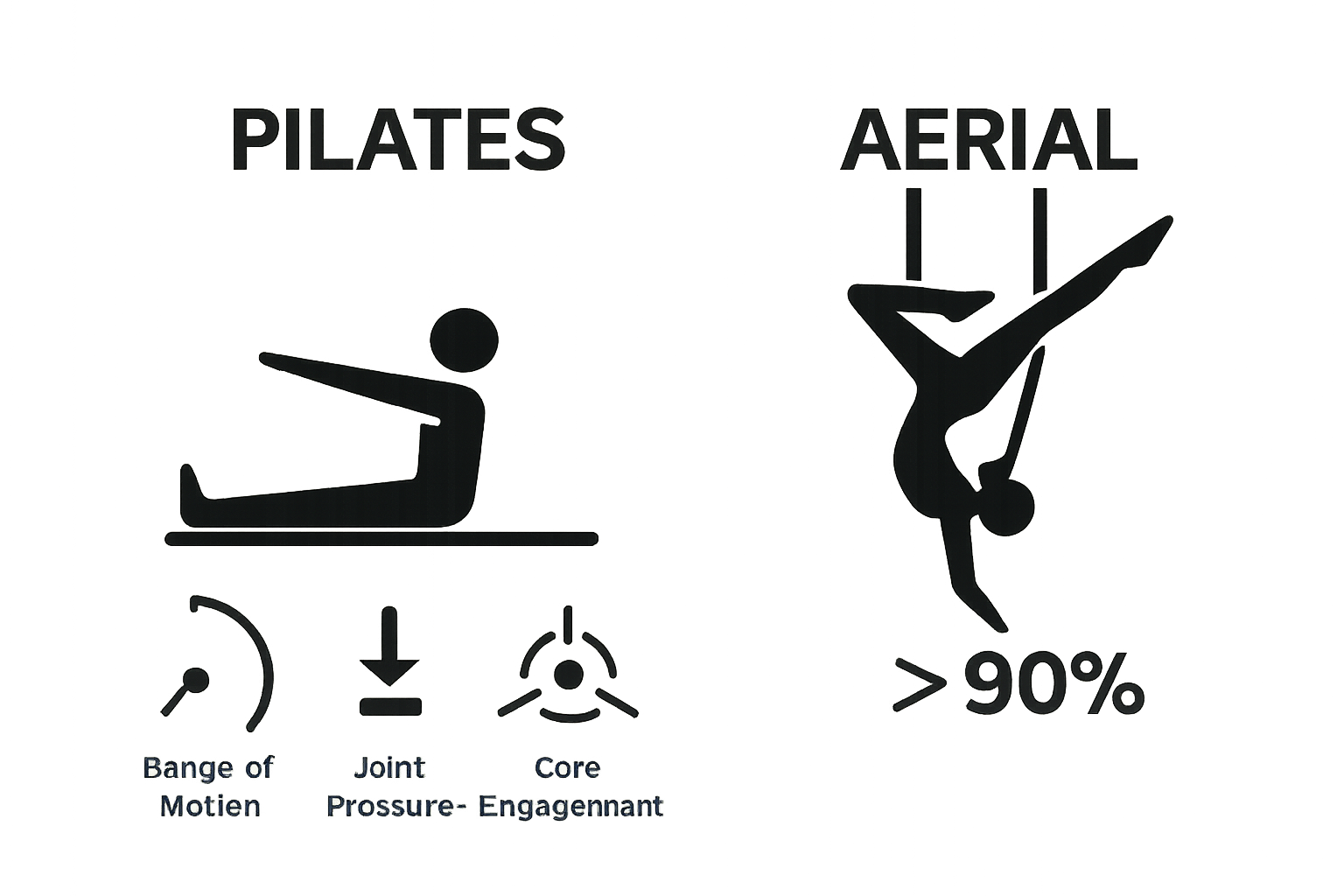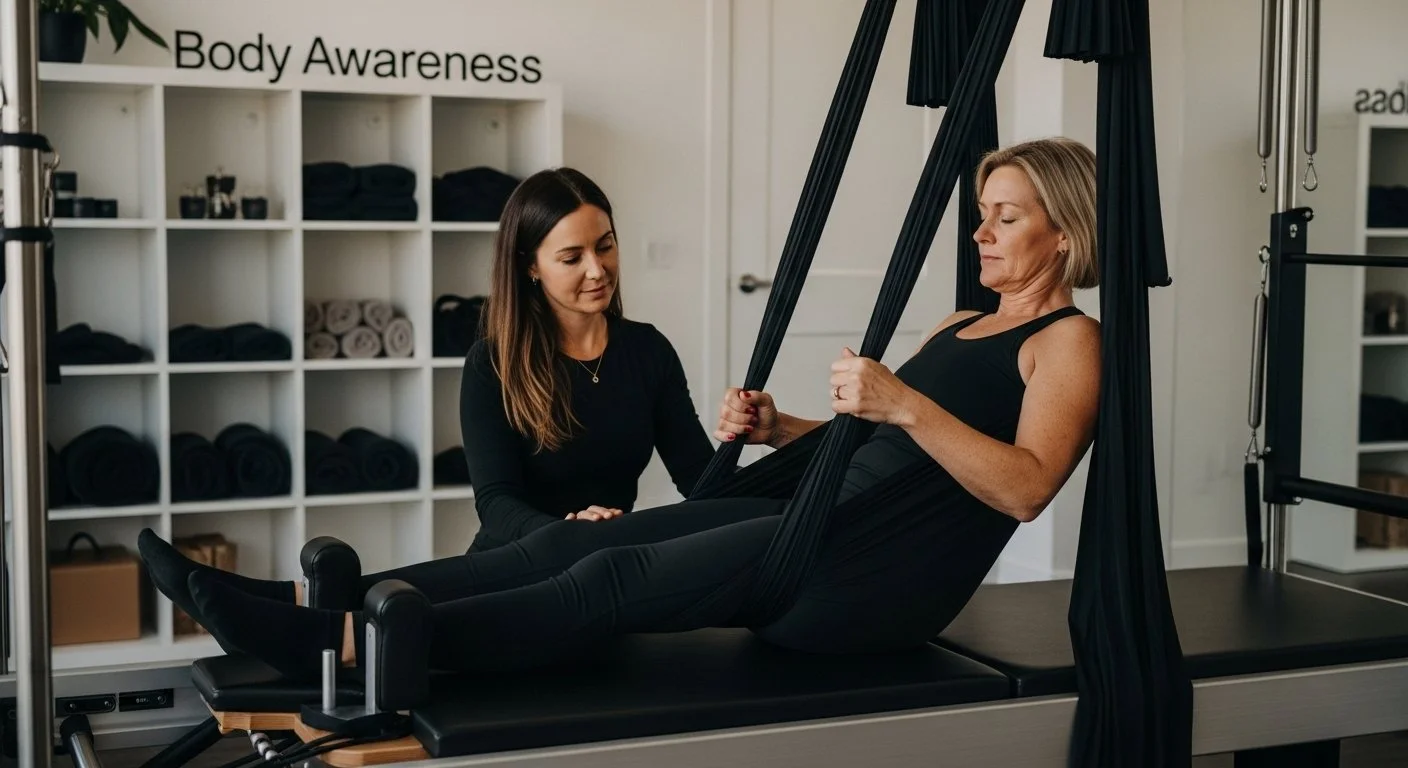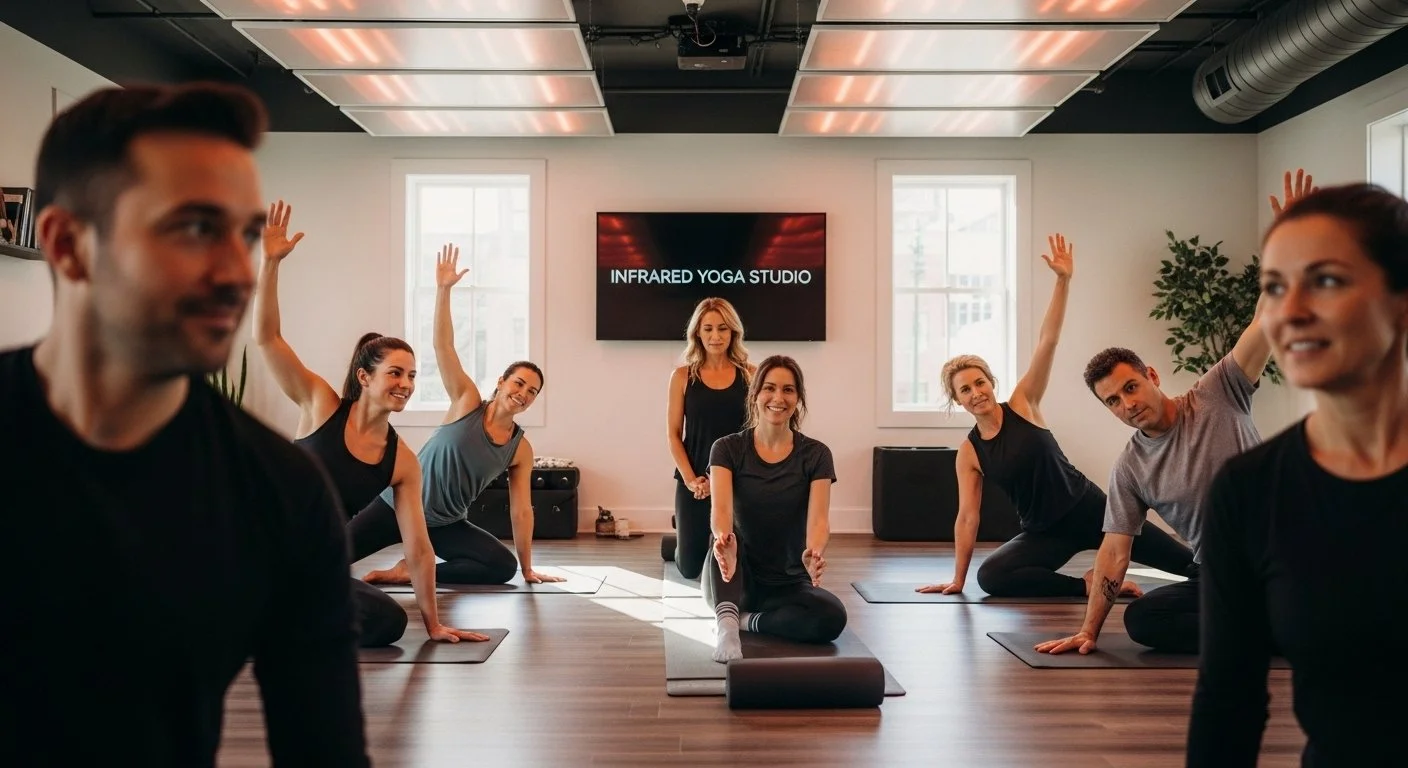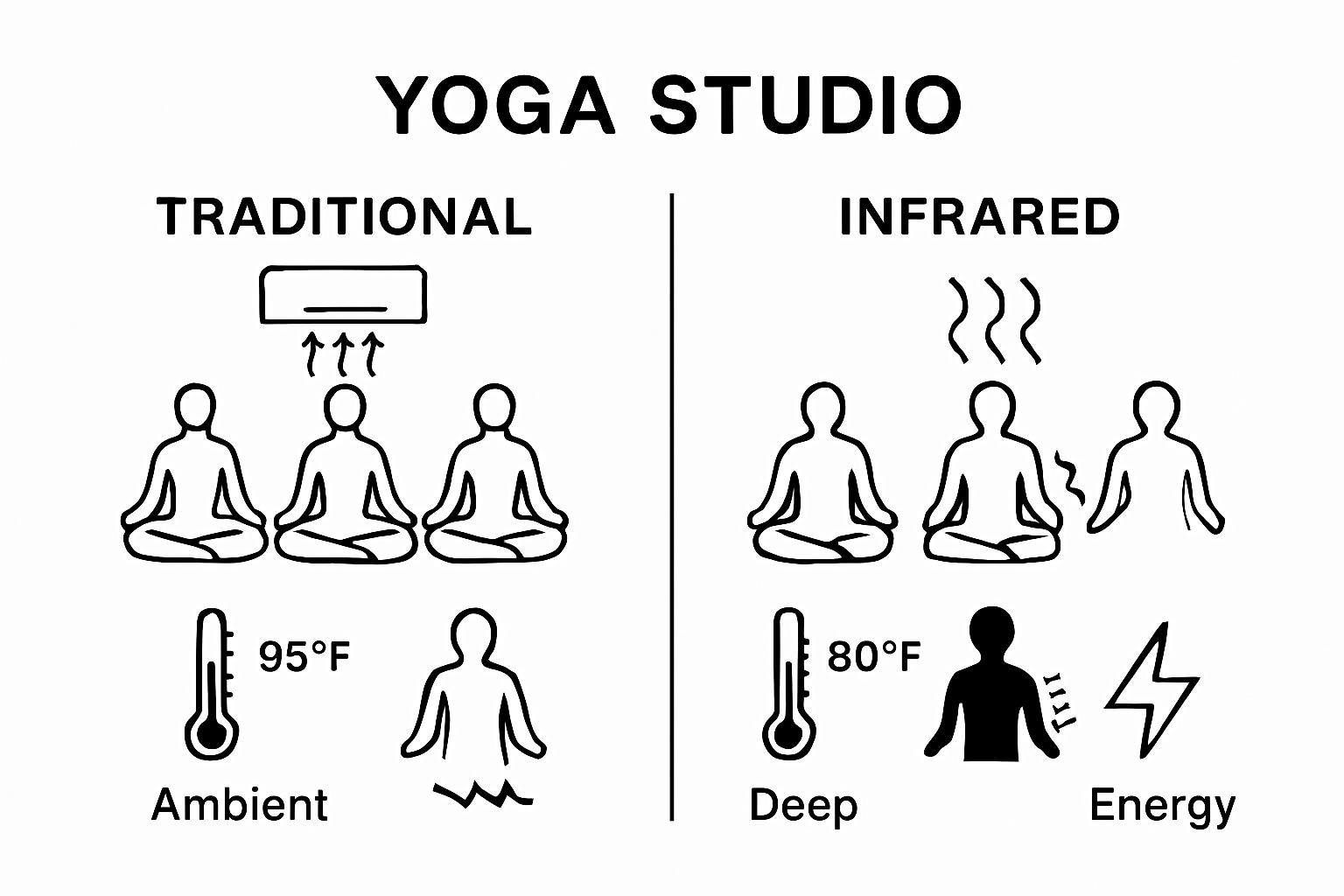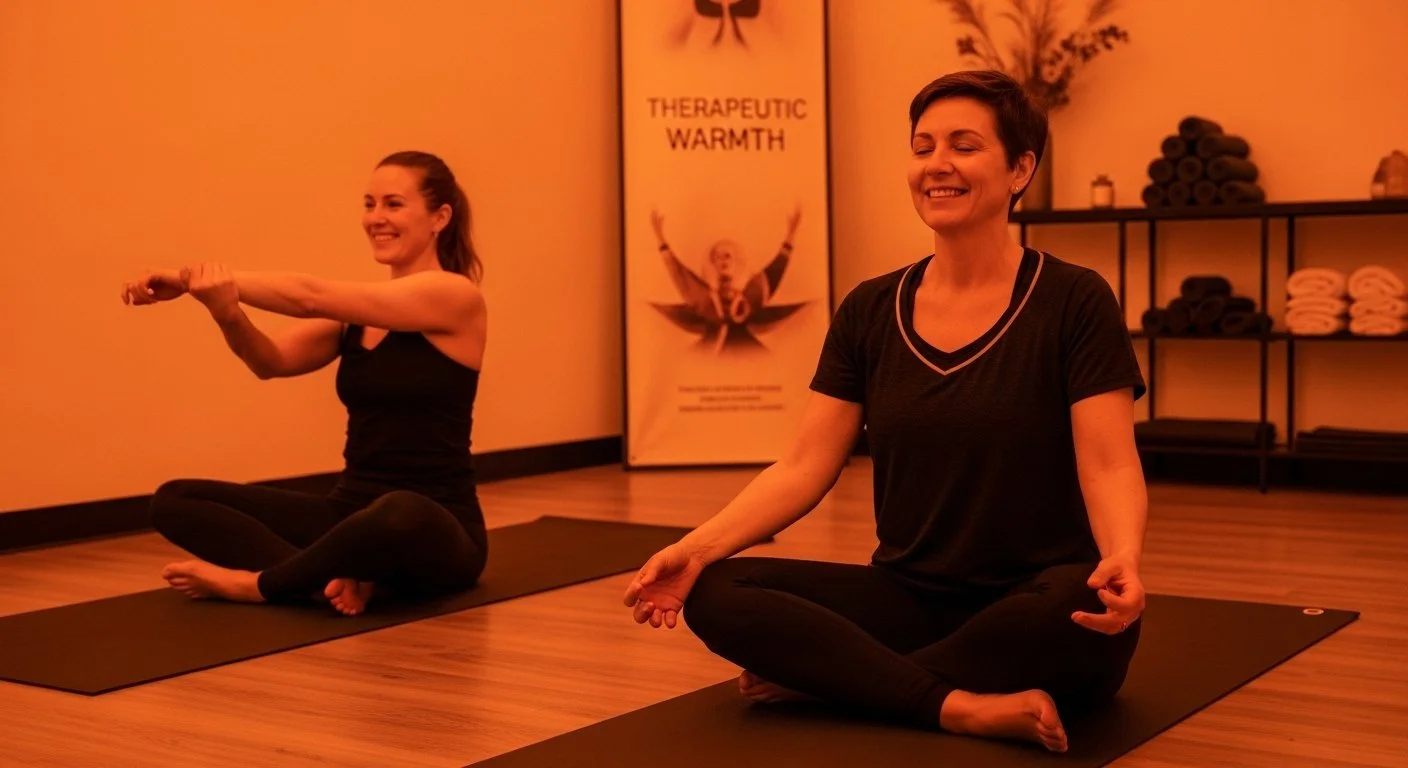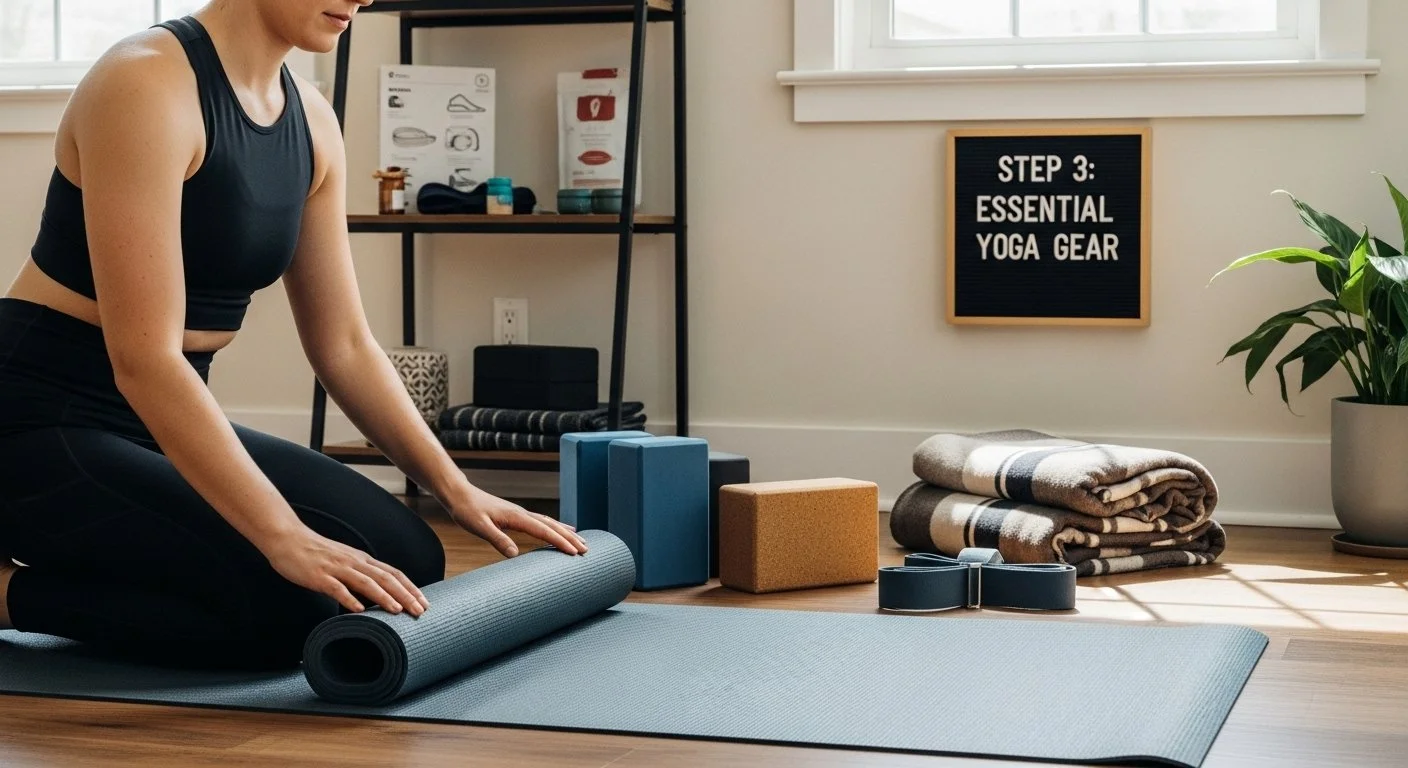Master the Art of Yoga: Practice Yoga for Wellness
Heather Rice
Starting yoga seems simple at first. You just need a mat and a quiet space, right? But most beginners are surprised to learn that choosing the right yoga style and environment can make or break your practice before it even begins. The real secret is that your first step is not about acing a pose but about setting up your entire journey for comfort, confidence, and long-term success.
Table of Contents
Quick Summary
Key PointExplanation1. Choose the Right Yoga StyleAssess your wellness goals to select an appropriate yoga style that aligns with your needs and abilities.2. Create a Dedicated Practice SpaceDesignate a quiet, comfortable area with minimal distractions to enhance your yoga experience and mindfulness.3. Establish a Consistent ScheduleDevelop a flexible yoga routine that fits your lifestyle and includes manageable practice time slots.4. Incorporate Breathing and MeditationUse breathwork and meditation to deepen your yoga practice, fostering greater mind-body connection and stress reduction.5. Regularly Evaluate Your ProgressKeep a practice journal to track changes in your physical and mental state, allowing for mindful adjustments in your practice.
Step 1: Choose Your Yoga Style and Environment
Starting your yoga journey begins with selecting the right style and creating an optimal practice environment. Your initial choice will significantly impact your motivation, comfort, and long term success in developing a consistent yoga routine. Learn more about beginner yoga classes to help guide your initial selection.
Understanding your personal wellness goals is crucial when choosing a yoga style. Are you seeking stress reduction, physical fitness, flexibility, or spiritual connection? Yoga offers diverse practices ranging from gentle restorative styles like Hatha to more dynamic practices such as Vinyasa or Power Yoga. For those new to practice yoga, starting with a beginner friendly style allows you to build foundational skills and confidence.
Your practice environment plays an equally important role in your yoga experience. Select a quiet, comfortable space with enough room to move freely without obstruction. Natural lighting can enhance your mood, while minimizing external distractions helps maintain focus. A consistent, dedicated space signals to your mind and body that this time is sacred and reserved for personal wellness.
If home practice feels challenging, consider joining a local studio where professional instructors can guide your initial steps and provide structured learning environments.
As you explore different yoga styles, pay attention to how your body responds. Listen to your physical sensations and respect your current fitness level. Some practitioners might prefer a heated practice like Hot Yoga, while others might find gentler approaches more suitable. The key is finding a style that feels both challenging and enjoyable, creating a sustainable practice you will want to continue.
Below is a comparison of common beginner yoga styles to help you select the best fit based on your goals and preferences.
Yoga StyleIntensity LevelMain FocusBest ForHathaLow to MediumFoundational posesBeginners, stress reductionVinyasaMedium to HighFlow and movementBuilding fitness, flexibilityRestorativeLowDeep relaxationStress relief, recoveryPower YogaHighStrength, endurancePhysical fitness, challengeHot YogaHighIntense, heated flowSweating, detoxification
Successful yoga practice is about consistent, mindful engagement. Your first step is not about perfection but about creating a welcoming, supportive pathway into this transformative wellness practice.
Step 2: Gather Your Equipment and Resources
Preparing for your yoga practice requires thoughtful equipment selection that supports your comfort and progression. According to medical resources, having proper equipment can significantly enhance your practice and reduce potential injury risks.
A quality yoga mat forms the foundation of your practice, serving as more than just a surface but a personal space for movement and reflection. When selecting a mat, consider factors like thickness, texture, and material. Beginners might prefer slightly thicker mats offering more cushioning, while more experienced practitioners might opt for thinner, more stable surfaces that provide better ground connection. Invest in a mat that feels comfortable and provides adequate grip to prevent slipping during various poses.
Beyond the mat, strategic equipment can support your practice. Yoga blocks help modify poses for different flexibility levels, allowing you to safely explore postures without strain. Straps can assist in extending reach and deepening stretches, particularly beneficial for practitioners working on flexibility. A lightweight, breathable outfit that allows unrestricted movement is crucial. Choose clothing that makes you feel confident and comfortable, whether that means fitted yoga leggings, loose comfortable shorts, or layers that can be easily adjusted.
Resources are equally important as physical equipment. Explore beginner yoga classes to supplement your home practice and gain professional guidance. Online tutorials, instructional videos, and local workshops can provide valuable insights into proper technique and pose modifications. Consider creating a dedicated practice space with minimal distractions, perhaps with a small area for meditation cushions or additional props.
Successful equipment gathering means building a personalized yoga toolkit that evolves with your practice. Start simple, focus on quality over quantity, and remain open to adjusting your resources as you grow in your yoga journey. Your equipment should feel like an extension of your practice, supporting your physical and mental exploration.
Use this table as a quick checklist of essential yoga equipment and recommended resources to create a successful and comfortable practice space.
Item or ResourcePurpose/BenefitNotesYoga matFoundation for movement, tractionChoose suitable thickness/gripYoga blocksModify poses, aid flexibilityUseful for beginnersYoga strapDeepen stretches, assist in reachSupports flexibility progressComfortable clothingAllows free movement, builds confidencePrefer breathable, non-restrictiveOnline tutorialsProfessional technique, learning supportGreat supplement to home practicePractice journalTrack progress, encourage reflectionUpdate regularly for insights
Step 3: Set a Consistent Practice Schedule
Establishing a consistent yoga practice requires strategic planning and commitment. Scientific research demonstrates that regular practice yields significant physical and mental health benefits, making schedule creation a critical component of your wellness journey.
Your yoga schedule should align with your current lifestyle and energy patterns. Instead of creating an unrealistic regimen, design a flexible routine that feels sustainable and enjoyable. Consider your daily rhythms: are you more energetic in the morning or evening? Some practitioners find morning sessions help set a positive tone for the day, while others prefer evening practices to decompress and release accumulated stress.
Start by allocating realistic time blocks for your practice. Beginners might begin with shorter 15-20 minute sessions, gradually increasing duration as comfort and skill develop. Consistency matters more than marathon sessions. Aim for quality over quantity, focusing on mindful movement and breath connection rather than lengthy, exhausting practices. If your schedule feels overwhelming, break sessions into smaller segments throughout the week, perhaps alternating between shorter home practices and longer studio classes.
Technology can be a powerful ally in maintaining your yoga schedule. Use digital calendars to block dedicated practice times, set reminder alerts, and track your progress. Many yoga practitioners find success by treating yoga appointments with the same importance as work meetings or medical appointments. Learn more about beginner yoga classes that can help structure your initial approach.
Remember that flexibility extends beyond physical poses—it also applies to your practice schedule. Some weeks might allow more extensive sessions, while others require condensed practices. The goal is creating a sustainable rhythm that supports your overall wellness without causing additional stress. Listen to your body, remain compassionate with yourself, and view your yoga schedule as a fluid, evolving commitment to personal health.
Step 4: Follow a Structured Yoga Sequence
A structured yoga sequence transforms random movements into a purposeful, holistic practice that nurtures both body and mind. According to yoga experts, a well-designed sequence supports physical progression and mental focus, creating a transformative wellness experience.
The foundation of an effective yoga sequence lies in mindful progression. Begin with gentle warm up movements that awaken your body, typically starting with breathing exercises and slow, deliberate stretches. These initial movements prepare your muscles, increase blood flow, and create mental awareness. Transition gradually into standing poses that build strength and stability, focusing on proper alignment and breath connection. Explore how yoga combines with other wellness practices to deepen your understanding of holistic movement.
As your practice develops, incorporate a balanced mix of pose categories. Include standing poses for strength, balance poses to enhance concentration, seated stretches for flexibility, and gentle inversions to shift your perspective. Listening to your body remains paramount — modify poses as needed, using props like blocks or straps to support proper alignment and prevent strain. Each sequence should conclude with restorative poses and a final relaxation period, allowing your body to integrate the practice and your mind to settle into a state of calm.
Consistency and patience are key when developing your sequence.
Beginners might find it helpful to follow guided videos or attend classes that demonstrate proper flow and technique. As you become more comfortable, you can start customizing sequences that address your specific physical and mental wellness goals. Remember that a structured yoga practice is not about perfection, but about creating a mindful, compassionate connection between movement, breath, and personal growth.
Step 5: Incorporate Breathwork and Meditation
Breathwork and meditation represent the transformative core of yoga practice, bridging physical movement with profound inner awareness. Scientific research demonstrates that intentional breathing techniques can significantly reduce stress and enhance overall wellness. Your breath becomes a powerful tool for connecting mind and body, serving as a bridge between physical postures and deeper meditative states.
Begin your breathwork practice with simple techniques that feel accessible and comfortable. Diaphragmatic breathing, often called belly breathing, involves inhaling deeply through the nose, allowing your abdomen to expand fully, then slowly exhaling. This fundamental technique helps calm the nervous system and creates a foundation for more advanced breathing practices. Explore additional mindfulness techniques to complement your yoga journey.
Meditation does not require perfection, but consistent gentle practice. Start with short sessions, perhaps 5-10 minutes, focusing on your breath or using a simple mantra. Create a quiet environment where external distractions are minimized. Some practitioners find guided meditation apps helpful, while others prefer silent contemplation. The goal is not to eliminate thoughts completely, but to observe them without judgment, gently returning focus to your breath when your mind wanders.
Integrating breathwork and meditation into your yoga routine creates a holistic practice that nurtures both physical and mental wellness. Experiment with different techniques, remaining patient and compassionate with yourself. Some days will feel more challenging than others, and that's part of the practice. Your breath remains a constant anchor, providing stability and calm regardless of external circumstances. As you continue your journey, you'll discover that these practices extend far beyond your yoga mat, offering tools for managing stress and cultivating inner peace in daily life.
Step 6: Evaluate Your Progress and Adjust as Needed
Progress in yoga is a deeply personal journey that requires consistent self-reflection and compassionate assessment. Scientific research emphasizes the importance of regular evaluation to ensure safe and effective practice. Your yoga progression is not about comparing yourself to others, but understanding your own body's unique capabilities and limitations.
Start by establishing clear, realistic markers for your personal growth. These might include physical indicators like increased flexibility, enhanced breath control, or improved balance. Keep a practice journal to track subtle changes in your body awareness, emotional state, and overall well-being. Document how different poses feel, noting any challenges or breakthroughs. Learn more about tracking your wellness journey to support your ongoing development.
Adaptability is the cornerstone of a sustainable yoga practice. If certain poses consistently cause discomfort or strain, modify them using props or alternative variations. Listen to your body's signals — pain is not progress. Seek guidance from experienced instructors who can provide personalized adjustments and help you understand the difference between productive challenge and potential injury. Regular check-ins with yourself might reveal the need to shift your practice intensity, try new yoga styles, or focus on specific areas of physical or mental development.
Remember that progress in yoga transcends physical achievements. Mental resilience, increased self awareness, and improved stress management are equally significant indicators of growth. Some weeks you might feel incredibly strong and flexible, while others might require a gentler approach. Embrace these fluctuations as natural parts of your wellness journey. Yoga is not a destination but a continuous exploration of your physical, mental, and spiritual potential, requiring patience, curiosity, and compassionate self-observation.
This table summarizes each main step in establishing a yoga routine, along with estimated difficulty and the key outcome to expect.
StepDifficultyKey OutcomeChoose yoga style & environmentEasyComfortable, motivating foundationGather equipment & resourcesEasyProper support, increased safetySet a consistent practice scheduleModerateRoutine building, habit formationFollow a structured yoga sequenceModerateHolistic development, progressIncorporate breathwork and meditationModerateMind-body connection, stress reliefEvaluate your progress and adjustEasySustainable, personalized practice
Transform Your Yoga Journey With Personal Guidance from Amrita Yoga & Wellness
Are you feeling stuck trying to create a consistent yoga routine or struggling to find the right practice style and environment? The article explained how crucial it is to choose the style that matches your goals, build a supportive space, and establish mindful structure. Many beginners struggle with motivation, proper technique, and the confusion of evolving on their own. At Amrita Yoga & Wellness, our welcoming community and expert instructors provide the hands-on support and holistic resources you need to master yoga for wellness—whether you are a beginner or looking to deepen your journey.
Let us help you overcome those initial pain points and discover a yoga practice that fits your lifestyle. At Amrita Yoga & Wellness, you will find detailed class descriptions tailored for new and advanced students, professional instructors who can lead you every step of the way, plus a full schedule of classes, workshops, and wellness experiences. Don’t wait to experience a more balanced, energized, and mindful version of yourself. Visit our site and reserve your spot in a class today—start creating a lasting routine and real transformation now.
Frequently Asked Questions
What yoga style is best for beginners?
Choosing a beginner-friendly yoga style such as Hatha or gentle Vinyasa is ideal. These styles focus on foundational skills and allow you to develop confidence in your practice.
How do I create a comfortable yoga practice environment at home?
Select a quiet and spacious area with natural lighting to minimize distractions. Use a soft mat and ensure you have enough room to move freely for a more enjoyable practice.
What equipment do I need to start practicing yoga?
At a minimum, a quality yoga mat is essential. Additionally, consider using props like yoga blocks and straps for modifying poses, and wear comfortable clothing that allows for unrestricted movement.
How can I evaluate my progress in yoga?
Keep a practice journal to track flexibility, breath control, and overall well-being. Regularly check in with yourself to assess your comfort with poses and make necessary adjustments to enhance your practice.
